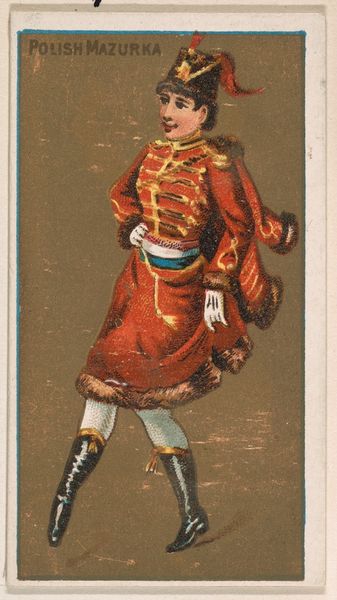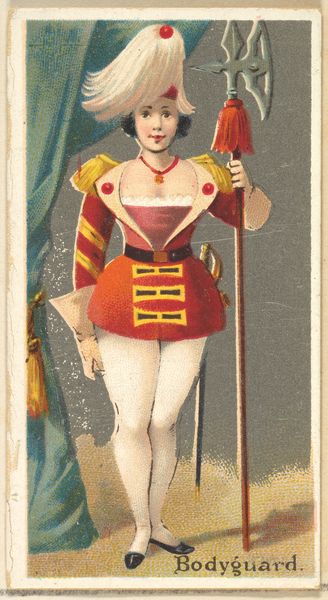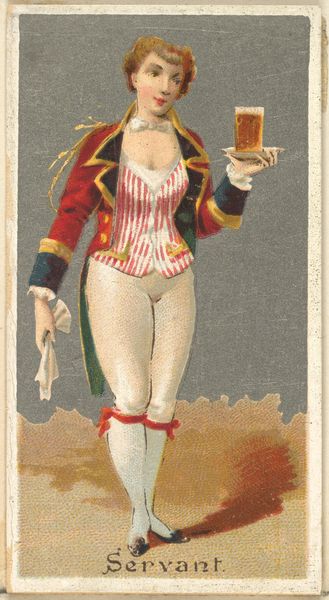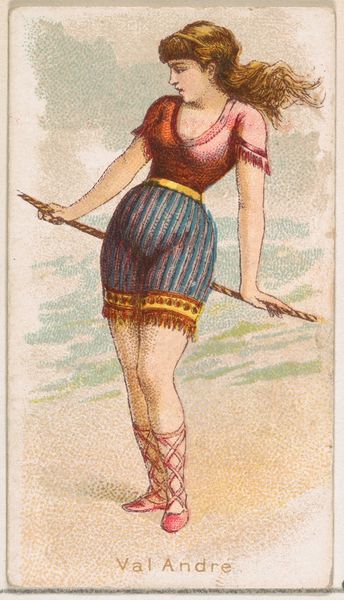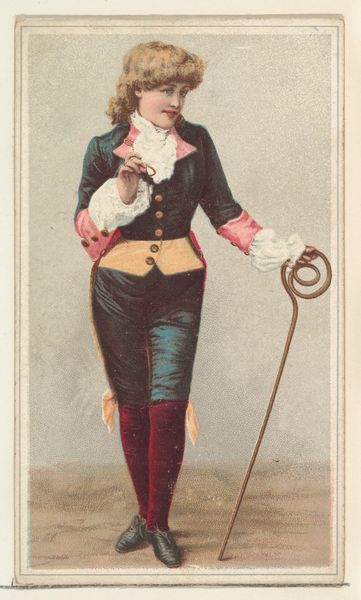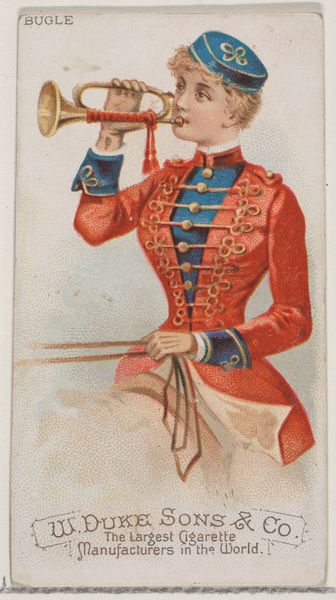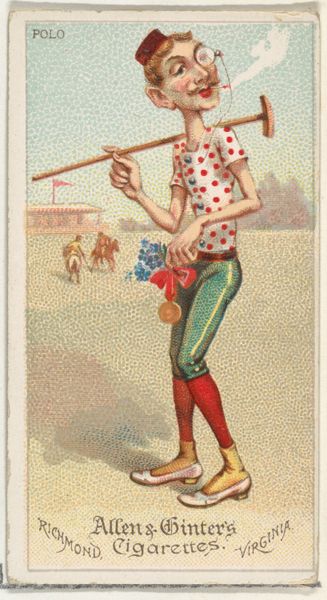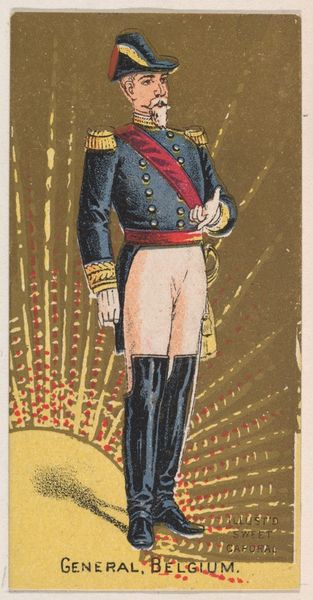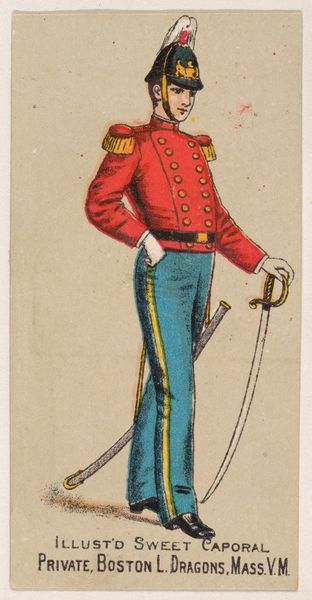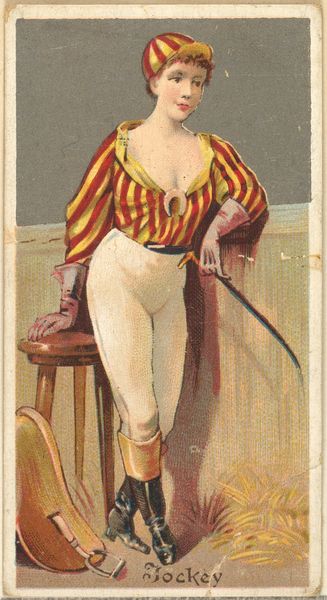
Magyar, from World's Dudes series (N31) for Allen & Ginter Cigarettes 1888
0:00
0:00
Dimensions: Sheet: 2 3/4 x 1 1/2 in. (7 x 3.8 cm)
Copyright: Public Domain
Editor: This is "Magyar, from World's Dudes series (N31) for Allen & Ginter Cigarettes," dating back to 1888. It's currently housed in the Metropolitan Museum of Art. It's quite a striking image! What strikes me most is its size and detail, considering it was part of a cigarette card series. How would you interpret this piece? Curator: Given its original context as a cigarette card, it's crucial to view this "Magyar" print through the lens of late 19th-century consumer culture and emerging globalism. Allen & Ginter's "World's Dudes" series participated in constructing and disseminating specific, often exoticized, images of foreign cultures for American audiences. How does this portrayal of a "Magyar" individual reinforce or challenge prevalent stereotypes of the time? Editor: That’s fascinating. I hadn't considered the impact that early advertising had in shaping perceptions. It almost feels like a very early form of cultural propaganda, setting the stage, and even setting the tone, for how other countries are perceived even today. I notice how it positions "Magyar" within a broader narrative. Does the placement of these cards— within cigarette packs—speak to the social status or cultural aspirations of the consumers? Curator: Absolutely. Cigarette cards like these functioned as a form of accessible art and a tool for educating, or perhaps more accurately, informing, the masses about the wider world. Consider the power dynamics at play: who is doing the representing, and for whom? These images were consumed within a specific social and economic framework, subtly promoting ideas about race, class, and national identity. The images themselves helped Allen & Ginter sell their products, yes? They served a function within the institution of American industry and commerce. Do you think we can make this conclusion about similar marketing campaigns today? Editor: Definitely! Understanding that commercial context really changes how I see this little card. It's more than just a quaint image; it’s a reflection of societal power structures and the role art plays in reinforcing them. I never thought about how objects like this could function almost like little political artefacts! Curator: Precisely! And examining its place within the history of museums allows us to critically evaluate the museum's own role in shaping our understanding of art and culture, too. There is a world behind the frame, here!
Comments
No comments
Be the first to comment and join the conversation on the ultimate creative platform.


